- Home
- Louisa May Alcott
The Annotated Little Women Page 3
The Annotated Little Women Read online
Page 3
The answer begins with the fact that, in the late 1860s, The Pilgrim’s Progress was a part of the Anglo-American cultural lingua franca. In 1866, Cincinnatian Philip Phillips published a collection of hymns called The Singing Pilgrim, or, Pilgrim’s Progress Illustrated in Song. Mark Twain gave his 1869 book The Innocents Abroad the subtitle The New Pilgrim’s Progress. The same year, England’s Mary Godolphin published a children’s edition of Bunyan’s work called The Pilgrim’s Progress in Words of One Syllable, and Ebenezer Porter Dyer made his contribution to the literature with Bunyan’s Pilgrim’s Progress in Verse. Essays and lectures poured forth in abundance, and a determined bibliographer would be required to identify all the new editions of the book itself that were coming into print. By relating the domestic drama of Little Women to the spiritual strivings of Pilgrim’s Progress, Alcott immediately established a common ground for herself and her readership.
Another reason for Alcott’s reliance on The Pilgrim’s Progress was more personal; it gave her a way to place her father’s principles in the foreground of Little Women while keeping his problematic personality in the background. Although she proved adept at creating fictionalized alter egos for her mother and sisters, Alcott struggled to present her father in the light that she desired. In her private interactions with him, she dealt with his often-baffling eccentricities with heavy doses of humor. But the treatment that, between them, felt like good-natured raillery would have seemed like ridicule in print, and Alcott had no wish to hold her father up for laughter. Moreover, Bronson Alcott was, in many circles, a well-known figure. To place a fictionalized version of him near the center of the action in Little Women was to risk drawing too much attention from the main focus of Alcott’s story. In 1868, Alcott was also planning to write a novel for adults devoted solely to incidents in her father’s life, which she intended to call The Cost of an Idea. It would not have done for her to use in Little Women the material she was saving for this other project, one that, sadly, she was never able to complete. Alcott thus decided to keep Mr. March in Little Women largely hidden from view, sending him off to war for most of Part First and then virtually barricading him in his study for the majority of Part Second. So eager was Alcott to keep the March family’s patriarch sheltered from view that the first action he performs when he returns from the front is to “become invisible” in the embrace of his family.
Yet Alcott wanted to keep her father’s values—his love of self-sacrifice, his transcendence of earthly appetites, and his belief that the goal of life is spiritual purification—very much in view. A key device for doing so was to use The Pilgrim’s Progress as a leitmotif in Little Women. Observing both the hellish trials and heavenly potentials of human existence, The Pilgrim’s Progress is a fatherly book: one that teaches, cajoles, sets high standards, and demands the best of those it would instruct. It is, in all these features, similar to Bronson Alcott himself. In the same ways, it resembles Little Women.
But the true ingeniousness of Alcott’s use of The Pilgrim’s Progress in Little Women arises from the differences she maintains with Bunyan, not the similarities, or perhaps more accurately the differences within the similarities. The Pilgrim’s Progress, like Little Women, was published in two parts. In the first, the allegorical believer Christian leaves his wife, Christiana, and four children behind at their home in the City of Destruction and embarks on a lonely quest to save his soul and find his way to the Celestial City. Published six years later, Part Two ties up a rather pendulous loose end: What has become of the pilgrim’s abandoned family, left to fend for themselves in a place that, we have been led to understand, will be destroyed by fire from heaven? Far from being annihilated as promised, Christiana and her offspring decide to follow their husband and father. Tracing the same path of woe and temptation, they, too, arrive at salvation. In their case, however, evidently doubting that a woman and her children could make their way on their own, Bunyan supplies Christiana and her brood with a male guide and protector, Great-heart, who offers moral lessons and handily slays a few dragons along the way.
Most of the material that Alcott transposes from Bunyan into Little Women comes from Part One of The Pilgrim’s Progress. However, the poem that she adapts to serve as the novel’s preface is taken from the beginning of Part Two. It is also from Part Two that Alcott derives the principal theme of the first half of her novel: the moral progress of a mother and her four children in the absence of the family’s male head. In crafting her own tale of deliverance, Alcott accepts few of Bunyan’s assumptions about how the journey must be made. To the contrary, she challenges and even reverses them, and in so doing she articulates a much more progressive concept of the human spirit.
Alcott differs profoundly from Bunyan in her representation of childhood. Christiana’s offspring are all male. Bunyan eventually gets around to naming the four boys—Matthew, Samuel, Joseph, and James—but until almost the second third of Part Two they are anonymous. Although James shows somewhat quicker spiritual perception than his elder brothers, there is nothing else about the boys’ characters to differentiate them. Bunyan, righteously intent upon saving the souls of Christiana’s sons, had no interest whatever in exploring them. Though Bunyan sets forth the boys’ birth order, he does not specify their ages, and they grow up astoundingly quickly. At the outset of Part Two, James and his brothers seem to be young children. By the end of the journey, which seems to have been accomplished in a matter of weeks or months, they are all old enough to have taken wives and to assist Great-heart in some of his giant-killing. The boys’ wives interest Bunyan even less. Only Matthew’s bride, Mercy, stands out; she has been Christiana’s traveling companion since the journey began and has offered frequent, thoughtful comments on the unfolding action. The other three wives are accorded names but not a hint of personality, and they function solely as wives. We hear of their good natures and fertility. Otherwise, we learn only that they “did much good in their place.”
Doing good in one’s place also mattered to Alcott, but it was rarely sufficient. Moreover, her notion of place was notably more flexible than Bunyan’s, in more ways than one. A few months before she began work on Little Women, Alcott published an essay called “Happy Women,” a response to what she saw as a besetting worry of women of her time: the fear that they would become old maids. Alcott assailed the anxiety as a “foolish prejudice” and told of four women she knew who had discovered satisfaction without finding or even looking especially hard for husbands. Alcott’s four subjects had found fulfillment as a doctor, a music teacher, a home missionary, and, not surprisingly, a writer. Case by case, Alcott argued that a life devoted to “philanthropy, art, literature, music, medicine, or whatever task” could be as worthy and fulfilling as one given to a husband. The world, Alcott insisted, “is full of work, needing all the heads, hearts, and hands we can bring to do it.” Her Yankee practicality and loathing of waste forbade any other conclusion. Whereas Bunyan had assumed that salvation was the destiny of a chosen few, Alcott averred that happiness was “the right of all.” Its attainment lay in using one’s talents for the good of society.
The same doctrine is implicit in Little Women. Unlike Christiana’s daughters-in-law, the March sisters have not one place but many, and Alcott tries not to discriminate among those places. Although a twenty-first century woman may find the paths pursued by Jo and Amy more exciting and appealing than those of the more domestically oriented Meg and Beth, Alcott was reluctant to make any such judgment. When, in her journal, she alluded to Lizzie Alcott, Beth’s real-life counterpart, as “Our Angel in the House,” she did so with reverence, not sarcasm. She regarded the choice of Meg’s alter ego, Anna, to live quietly as a wife and mother, with a tinge of envy. Alluding to her stories, Alcott wrote, “I sell my children, and though they feed me, they don’t love me as [Anna’s] do.” In her nonfiction, Alcott referred to domestic obligations as “a woman’s tenderest ties.” Yet when Marmee declares in Little Women that “to be loved and chosen by a go
od man is the sweetest thing which can happen to a woman,” we need not presume that Alcott entirely agreed. Even for Marmee, whose judgments regarding a woman’s “place” are somewhat more conservative than Alcott’s own, happiness and usefulness matter more than the fulfillment of a preassigned role. “Better be happy old maids,” Marmee cautions, “than unhappy wives.”
Alcott’s differences with Bunyan on the significance of place have another, more ironic dimension. Although Part Two of The Pilgrims’ Progress deals with saving the supposedly lesser denizens of a household deprived of its erstwhile master, the physical home is the one place where a person seeking to save herself must not stay. The home from which Christiana and her children flee is a place of guaranteed destruction. As always, Bunyan was speaking allegorically; he meant to suggest that one must guard against being comfortable and at home with one’s sinful practices. Nevertheless, the movement in Bunyan is away from the familiar, to which the righteous person has no thought of returning. Bunyan, who had no confidence whatever in human institutions, could hardly believe in the saving power of even so basic an institution as the family. In Little Women, where the moral journeys require self-discovery as well as self-purification, the physical trajectories can be more complicated. Hearth, home, and human comforts are not the moral death traps they appear to be in The Pilgrim’s Progress. To the contrary, home and family in Little Women are the quintessentially saving institutions for all. Indeed, the ideal end toward which Alcott’s narrative moves is not merely an affirmation of family, but an enlarged vision of family. Plumfield, the educational Utopia that Jo and the Professor establish at the end of the book, is a nuclear family gone, if you will, thermonuclear. It is, as Jo describes it, “a good, happy, home-like school.” The original student body is “a family of six or seven boys” (emphasis added), and Jo’s vision for the school emphasizes nurture first and education second. “I should so like to be a mother to them,” she declares, and school and family effectively merge.
Bunyan would never have conceived that the best path through life might be circular, leading the moral adventurer back to the point where she began. In Little Women, travel is essential for both Jo and May. Without it, May would never achieve refinement, nor would Jo arrive at experience or self-reliance. But the journey is essential to each, not because it offers a permanent escape from home, but rather because it instills her with a greater fitness for duty when she returns. The aim is not to evade the atmosphere of one’s origins, but to use the experience of one’s wanderings to make that atmosphere more cosmopolitan and compassionate than it had been in one’s childhood. Given the March girls’ worship of Marmee, it is easy to miss the fact that, by the end of the novel, her children have collectively improved on her example: as a guardian of the conventional home, Meg has become more or less her mother’s equal; Jo has expanded the reach of maternally fostered virtue far beyond the reach of a single family; and Amy has acquired a cultural polish that she will pass on to the next generation. Even tragic Beth, who does not live to create a home of her own, in one sense goes farther than her mother and, indeed, all her sisters combined. She has walked through her own place of Bunyanesque trial and temptation, the Valley of the Shadow. Through the grace and resignation she exhibits in death, she teaches Jo—and the reader—a starker but more sublime moral lesson than her mother ever offered.
To a modern eye, Little Women looks and feels like a devotedly Christian book. The girls’ father is a minister; their mother brightens their Christmas by distributing copies of “that beautiful old story of the best life ever lived.” And, of course, a book patterned after The Pilgrim’s Progress can hardly be said to venture terribly far from the foot of the cross. It is thus a challenge to remember that, when it was published, Little Women drew criticism for being insufficiently religious. The Ladies’ Repository lamented, “It is not a Christian book. It is religion without spirituality, and salvation without Christ.” The reviewer for Zion’s Herald was actually scandalized by Alcott’s appropriation of The Pilgrim’s Progress, viewing it not as a sign of reverence but as a “dis-spiritualizing of Bunyon’s [sic] great allegory.” The reviewer was troubled to see the Christian’s fight with Apollyon “reduced to a conflict with an evil temper and the Palace Beautiful and Vanity Fair [used to represent] only ordinary virtues or temptations.” The reviewer did not consider that evil is seldom so obliging as to take a form as recognizable as a fire-breathing monster, nor did the reviewer pause to reflect that Alcott’s readers were most likely to confront the devil precisely as the March sisters do: in their daily, commonplace impulses and failures of character. To the contrary, Little Women was seen as a secular, unholy tale, “perilous in proportion to its assimilation to Christian forms.” Alcott evidently paid little heed to her religious detractors; she certainly knew that their criticisms were beside the point. Although she placed Christian charity at the foundation of the March family’s sense of social mission, she intentionally painted the book’s religiosity in muted tones. Critics noted the conspicuous absence of a Bible from Beth’s sickroom, and others have noticed that, despite their father’s vocation as a minister, Meg is married at home instead of in a church, and the sisters collectively spend even less time attending services than the notoriously heathen Tom Sawyer and Huck Finn. Content to let actual ministers guide their flocks toward the Celestial City, Alcott focused on the saving propensities of love and family; she was intent upon articulating a vision of home as heaven, and of heaven as home.
If, as Little Women intimates, the path through life of even the most adventurous woman leads back to the family, what is to be said about Alcott’s concept of woman’s rights? On this subject, modern critics have found cause to feel dissatisfied. Does Amy travel the continent and cultivate her artistic powers only so that she can marry Laurie, a man who, for all his admirable efforts at reform, seems to remain her inferior in both will and apprehension? Is it really necessary that Meg’s son Demi should “tyrannize” his twin sister Daisy, while Daisy repays his oppressions by making “a galley-slave of herself . . . ador[ing] her brother as the one perfect being in the world”? It is in Jo, however, that current readers tend to feel the keenest sense of betrayal. Bravely flouting convention and broadcasting her independence at every opportunity, Jo has taken the male roles in her sisters’ plays and, in her father’s absence, has proudly become “the man of the family.” Throughout her growing up, she has seemed to fear almost nothing—except, interestingly, the fact of growing up itself. Promising so much as a model of equality and new womanhood, Jo seems to deliver very little. Having rejected Laurie in part because she fears he would “hate my scribbling, and I couldn’t get on without it,” Jo marries Professor Bhaer, the very man who persuades her to abandon her writing career. Even the act that is the culmination of her journey through the novel, the founding of the school at Plumfield, which Laurie pronounces “a truly Joian plan,” does not contain nearly as much of the old Jo as many of us might have hoped. The school, at its founding, is for boys only, and Jo proposes only “to take care of” the young students, while the Professor does the teaching. The influential feminist critic Carolyn Heilbrun put the problem aptly: “Jo reinvented girlhood, but the task of reinventing womanhood was beyond her.” Had Meg or Amy chosen the matronly tasks and comforts of Plumfield, one would likely accept the decision with a smile. For the former firebrand Jo, however, such a denouement feels like an almost cowardly retreat.
Except that it isn’t, though it took Alcott two more books to show it. What is already evident in Little Women is that, if we take as given that Jo must marry—and Roberts Brothers was adamant on that point—she chooses very well in Professor Bhaer, an embodiment of intelligence, moral rectitude, and unquestionable loyalty. Though Alcott did not so intend when she began it, Little Women is only the first volume of a trilogy, and the state of that trilogy’s characters at the end of Book One is by no means final. If Jo seems uncharacteristically passive and subordinate at the end of Littl
e Women, she does not remain so in the sequels. In Little Men and Jo’s Boys, her word on how Plumfield is to be run seems more authoritative than Professor Bhaer’s. Moreover, despite his misgivings in Little Women, the Professor not only tolerates Jo’s writing but creates conditions under which it can flourish. One also observes that “the school for little lads” does not remain all male for very long. By the time of Jo’s Boy’s, the academy has metamorphosed into the fully coeducational Laurence College, where young women train for the professions (one of them, Nan, becomes a successful doctor), hotly dispute the sexist assumptions of their male contemporaries, and anticipate Billie Jean King by besting the boys at tennis. And, of course, perhaps most reassuringly, Jo herself has reclaimed her literary career, becoming famous enough that she must climb out the back window to hide from importunate members of the press. Granted, Jo is no longer the spunky, wayward colt she was at fifteen—thank goodness none of us are—but in the place of her stormy impulsiveness she now has good-humored serenity, and as much respect and worldly fortune as she could want. Perhaps those who would demand a more revolutionary destiny for Jo—that she somehow preserve her tartness, impetuosity, and rebellious spirit to the very end—are asking of her the one thing that Jo herself knew to be impossible: that she never grow up.
Blissfully ensconced at Plumfield in Jo’s Boys, blessed with “money, fame, and plenty of the work I love,” Jo, not Professor Bhaer, has become the true sage of Plumfield; it is to her that admirers write in search of wisdom. To one such, who wonders how she should best educate her seven daughters, Jo replies that she should “let them run and play and build up good, stout bodies before she talks about careers. They will soon show what they want, if they are let alone, and not all run in the same mould.” Jo’s counsel seems hardly earth-shattering, but it conveys succinctly much of what Alcott herself hoped that all girls might be given: the chance to grow without fretting or fetters, to discover and cultivate their own strengths, and to use them as they choose. These three simple gifts are much of what girls—and boys and women and men—require even in our own time.

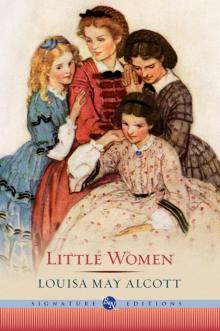 Little Women
Little Women Good Wives
Good Wives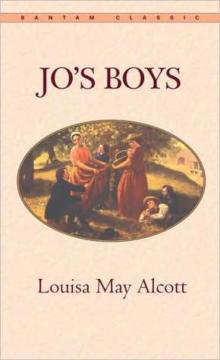 Jo's Boys
Jo's Boys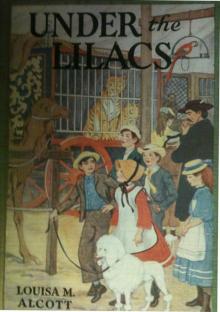 Under the Lilacs
Under the Lilacs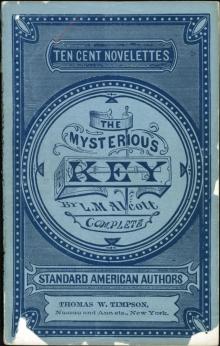 The Mysterious Key and What It Opened
The Mysterious Key and What It Opened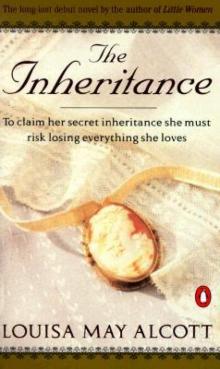 The Inheritance
The Inheritance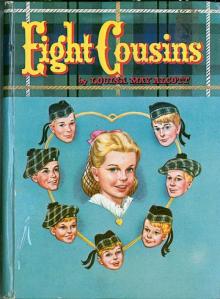 Eight Cousins
Eight Cousins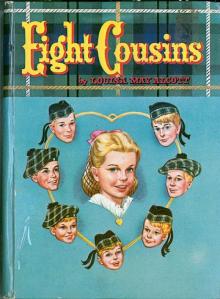 Eight Cousins; Or, The Aunt-Hill
Eight Cousins; Or, The Aunt-Hill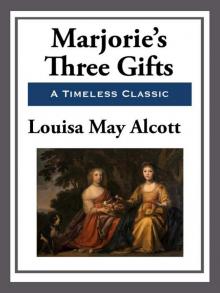 Marjorie's Three Gifts
Marjorie's Three Gifts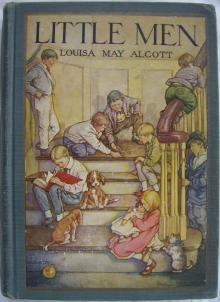 Little Men
Little Men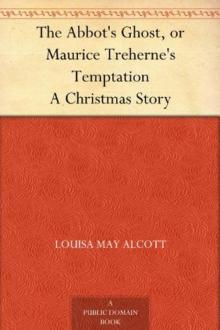 The Abbot's Ghost, or Maurice Treherne's Temptation: A Christmas Story
The Abbot's Ghost, or Maurice Treherne's Temptation: A Christmas Story Rose in Bloom
Rose in Bloom Shawl-Straps
Shawl-Straps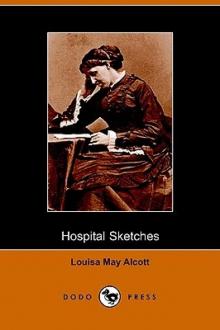 Hospital Sketches
Hospital Sketches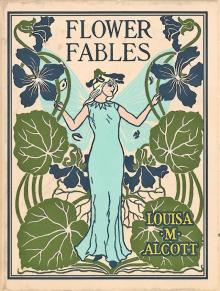 Flower Fables
Flower Fables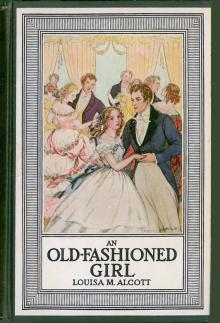 An Old-Fashioned Girl
An Old-Fashioned Girl The Candy Country
The Candy Country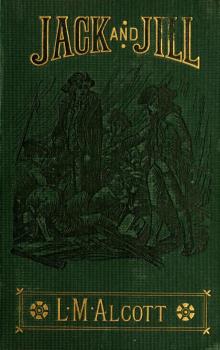 Jack and Jill
Jack and Jill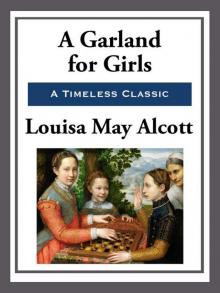 A Garland for Girls
A Garland for Girls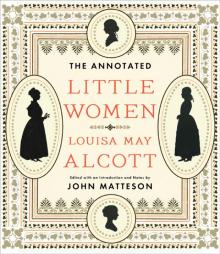 The Annotated Little Women
The Annotated Little Women A Classic Christmas
A Classic Christmas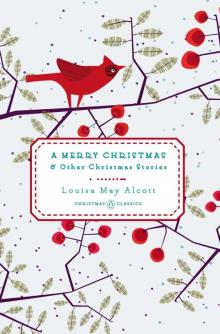 A Merry Christmas
A Merry Christmas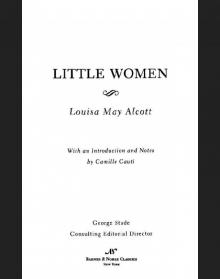 Little Women (Barnes & Noble Classics Series)
Little Women (Barnes & Noble Classics Series)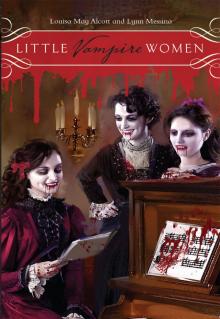 Little Vampire Women
Little Vampire Women